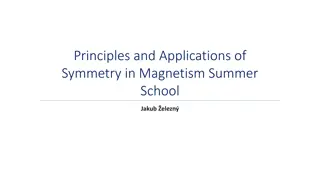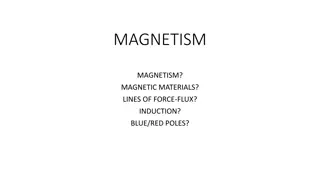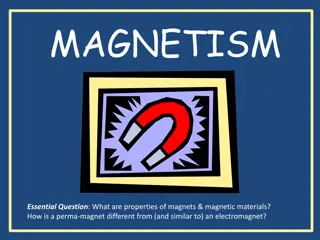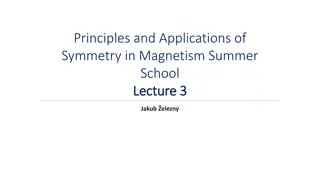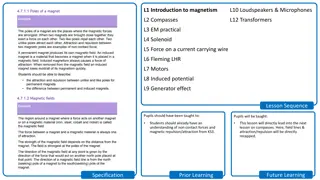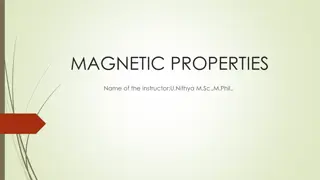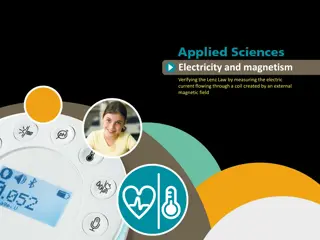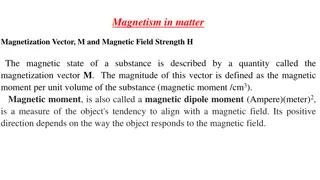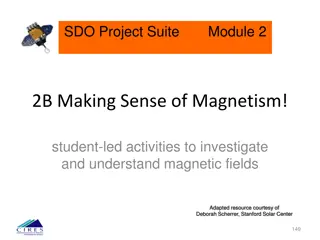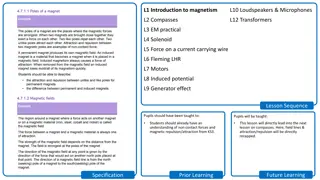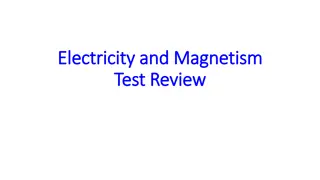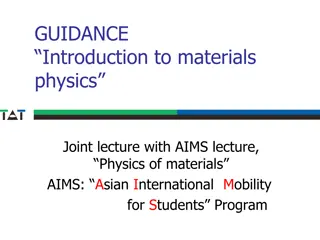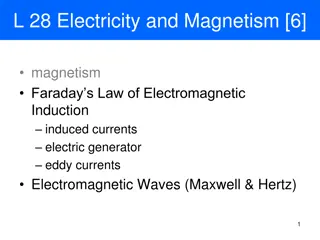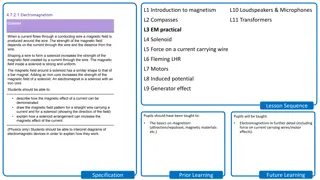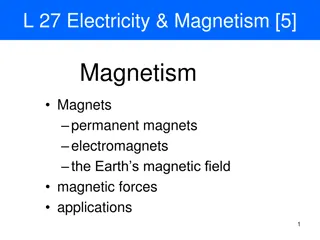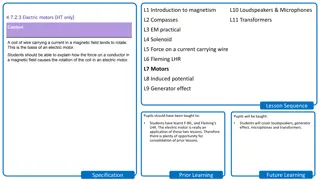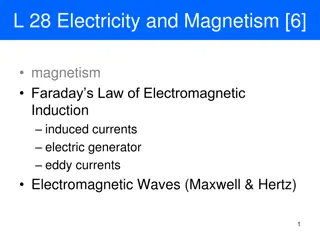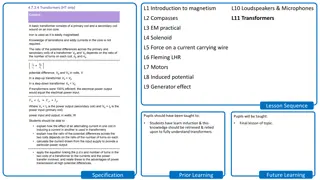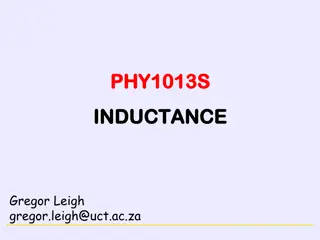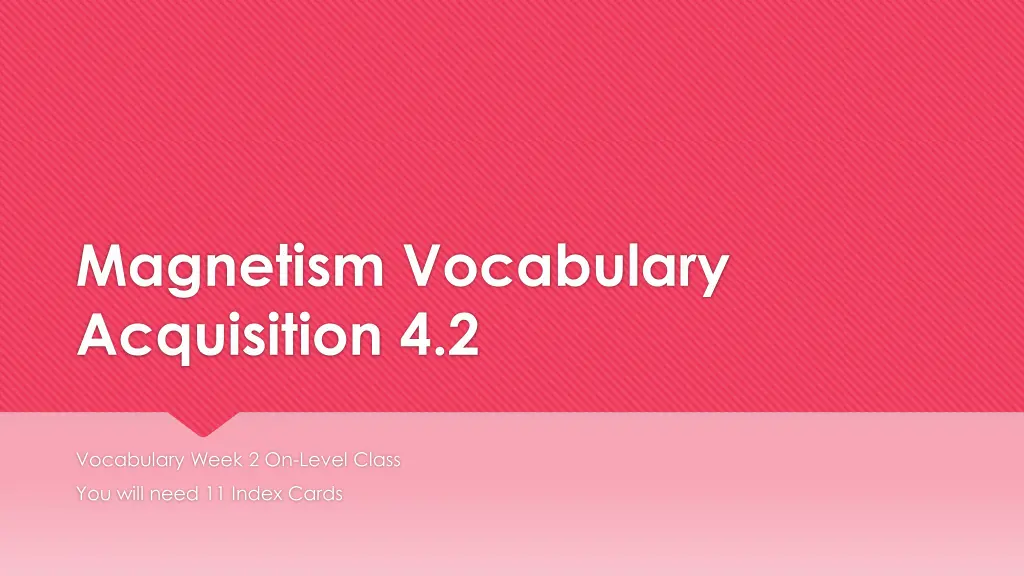
Understanding Electrical Circuits and Magnetism Vocabulary
Explore the essential vocabulary related to magnetism and electrical circuits including key terms like electricity, electric current, series circuit, parallel circuit, resistor, and more. Enhance your knowledge in this area to better understand the concepts of energy transfer and circuit components.
Download Presentation

Please find below an Image/Link to download the presentation.
The content on the website is provided AS IS for your information and personal use only. It may not be sold, licensed, or shared on other websites without obtaining consent from the author. If you encounter any issues during the download, it is possible that the publisher has removed the file from their server.
You are allowed to download the files provided on this website for personal or commercial use, subject to the condition that they are used lawfully. All files are the property of their respective owners.
The content on the website is provided AS IS for your information and personal use only. It may not be sold, licensed, or shared on other websites without obtaining consent from the author.
E N D
Presentation Transcript
Magnetism Vocabulary Acquisition 4.2 Vocabulary Week 2 On-Level Class You will need 11 Index Cards
S8P5b Electrical Circuits: Demonstrate the advantages and disadvantages of series and parallel circuits and how they transfer energy.
Electricity a form of energy resulting from the existence of charged particles (such as electrons or protons). https://www.youtube.com/watch?v=EJeAuQ7pkp c
Electric Current The continuous flow of electric charges through a material.
Electrical Circuit A complete, unbroken path through which charges can flow. https://www.youtube.com/watch?v=VnnpL aKsqGU
Energy Source A circuit must have an energy source to push a charge through the circuit. EX: A Battery creates a potential difference between its negative and positive terminals creating an energy source.
Series Circuit This is when all parts of an electric circuit is connected one after another along a path. Example: A switch and two light bulbs connected by a single wire.
Parallel Circuit The different parts of the circuit are on different branches. There are several paths for the current to take.
Resistor This is the measure of how difficult it is for charges to flow through a material. The greater the resistance, the less current there is for a given voltage.
Switch This is often included in a circuit to control the current. You can turn the device on or off by opening or closing the circuit.
Load An electrical load is an electrical component or portion of a circuit that consumes electric power. Not a power source, such as a battery or generator, which produces power. In electric power circuits examples of loads are appliances and lights.
Conductor A material through which a charge can flow easily. As atoms move they form an electric current and can carry an electric charge.
Battery A combination of two or more electrochemical cells in a series. This means the positive terminal of one cell is connected to the negative terminal of the next. https://www.youtube.com/watch?v=KkRwuM4S8BQ
Quizlet https://quizlet.com/_2yhezt
T.O.T.D Use BYOT to compare/Contrast Open and closed Circuits in a Double Bubble Map.
https://www.youtube.com/wat ch?v=E7412qJIgpM

